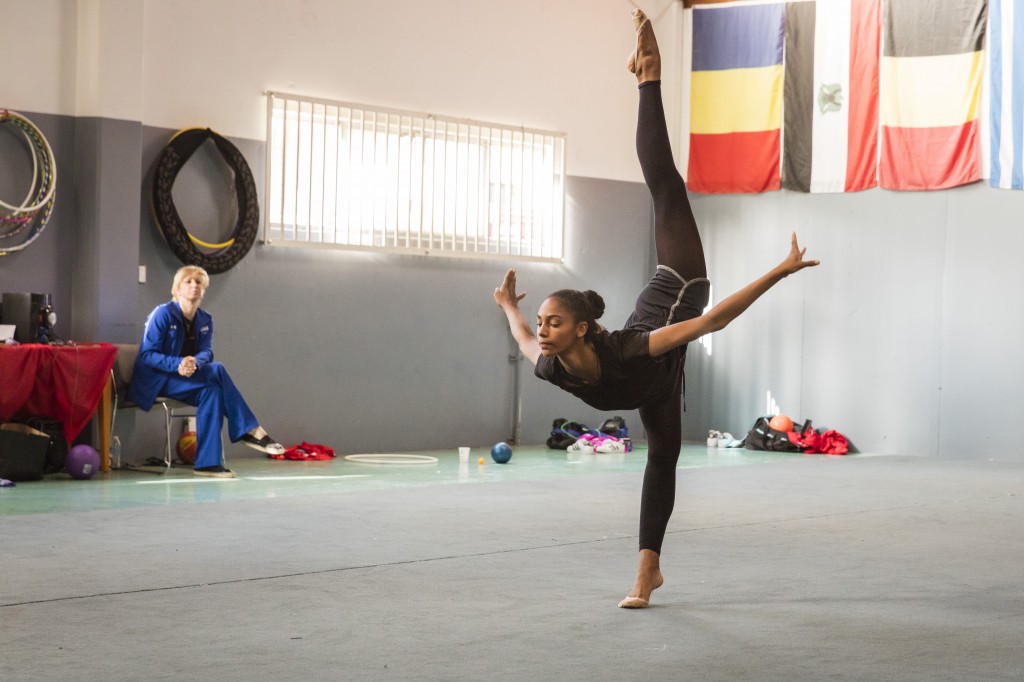Nastasya Generalova
SOCIALITE SPOTLIGHT: NASTASYA GENERALOVA
By Alyssa Salela
Never give up hope.
That is Nastasya Generalova’s mantra.
Growing up, the 16-year-old rhythmic gymnast was told by coaches she didn’t have what it took to make it in the sport. Her dark skin color was different than the other girls. Her athletic build stood out next to the small, skinny girls. Her single-parent home was an obstacle for such a time-consuming sport. After 12 years in the sport, Nastasya has done more than make it; she realized her dream as an Olympic hopeful for the United States Rhythmic Gymnastic team.
The young gymnast’s journey as an Olympic hopeful was chronicled in Lifetime’s docu-series Gold Medal Families which premiered on June 28.
The journey hasn’t been an easy one. Nastasya has not only maintained her rigorous training schedule, but also a normal high school schedule along with modeling opportunities and photo shoots. She walks around “almost like a zombie,” said her mother, Olga, since her typical days consist of about four hours of sleep.
Nastasya realized from a young age she was not the typical rhythmic gymnast. Coaches would tell her to lose weight. She looked around at the other paper-thin girls. It made her sad that she wasn’t skinny like them. Although her body type may have been better suited for other sports, she was drawn to the elegance and grace of rhythmic gymnastics. Her athletic build ultimately became an advantage, though.
“Because I have an athletic body type I can do things like jump higher,” said Nastasya. “My body has helped me against other girls.”
It is not only her body type that caused people to be skeptical. Nastasya says she has a different cultural background than most other girls in the sport. “I’m half-African American and half-Russian, while most others in the sport are white or Asian,” she says.
So, you see, Nastasya isn’t just chasing Olympic gold. Whenever she makes it to the Olympic games, she will be the first athlete of color to represent the United States in rhythmic gymnastics.
Her American and Russian heritage gives her strength; both countries are known to have a strong Olympic presence. Nastasya said this part of her identity makes her “internally powerful.”
Olga’s immigration to the United States is a driving force for Nastasya. She emigrated from Russia by herself. As a single parent, she works to provide Nastasya with everything she needs to succeed in her athletic career. “Why give up when she never gave up on me,” said Nastasya. “Whenever I practice, train, or perform she is in my mind and in my heart.”
Olga remembers visiting Russia at the beginning of Nastasya’s athletic career. Moscow, where Olga is from, is known for great choreographers. When Nastasya’s rhythmic career was brought up, people were skeptical of the programs in the United States. Now they have seen her succeed in national competitions. They have watched her stand up on the podium next to Russian athletes. Olga said, “They don’t take it as a joke anymore.”
Olga’s hope is that Nastasya’s unique identity opens doors for other girls like her. “I hope it can show that you don’t have to be a light color or very skinny to be good,” said Olga. “You can still be in the top. You can still be good.”
